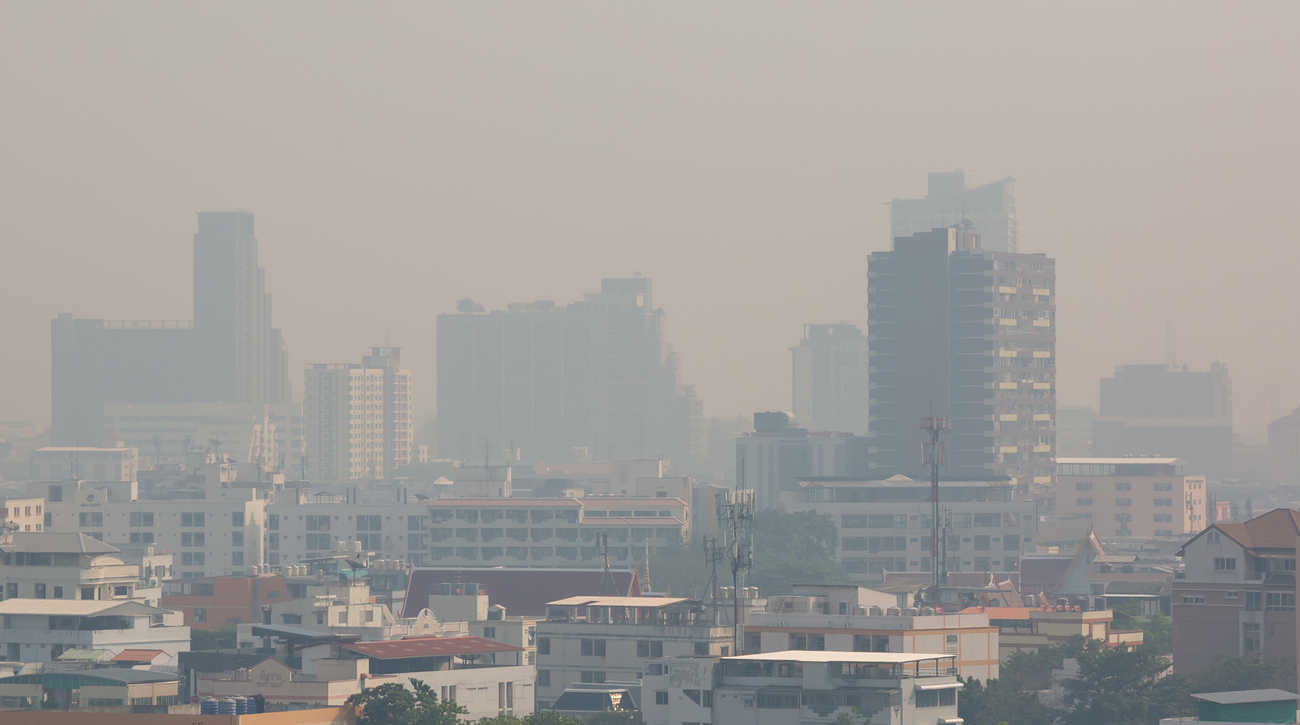A new study provides the first estimates of the burden of disease attributable to particulate pollution in hundreds of major cities worldwide. After taking population differences into account, the researchers found that cities in Asia and Europe shoulder the highest burden of mortality from particulate pollution.
“Millions of people living in cities from Shanghai to London are inhaling pollutants that can cause potentially deadly health problems,” said Susan C. Anenberg, PhD, lead author of the study and an associate professor of environmental and occupational health at the George Washington University Milken Institute School of Public Health (Milken Institute SPH). “The findings from this study suggest that policymakers can help not only clean the air, but keep people healthy and reduce greenhouse gases, by supporting initiatives that transition society away from fossil fuel use.”
Anenberg and her team used estimates of fine particulate matter or PM2.5 from NASA satellite data and other methods, along with epidemiology studies linking PM2.5 to mortality, to calculate how many premature deaths in 250 global cities could be attributed to inhaling these pollutants. Previous studies have shown that particulate pollution, which is released when fossil fuels are burned, is linked to lung cancer, heart disease and other potentially life-threatening diseases.
The researchers found:
- Only 21 of the 250 cities worldwide (all in Sweden, the United States, Canada, Australia or Brazil) had PM2.5 levels at the target levels set by the World Health Organization (WHO).
- At the same time, 104 of the 250 cities or 42 percent exceeded the WHO guidelines, a finding that suggests residents of these cities are routinely inhaling high levels of these risky pollutants.
- City-level PM2.5 attributable death rates ranged from 13 to 125 deaths per 100,000 people.
- The top ten worst cities for PM2.5 attributable death rates were in Asia and Europe.
- North American cities typically had low PM2.5 levels but still had air sullied by carbon dioxide, a greenhouse gas that contributes to climate change.
Air pollution remains a top risk factor for most countries globally and all cities, even those that have successfully reduced PM2.5.
“This study suggests that cities that start to tackle global warming more aggressively will get an added public health benefit,” Anenberg said, noting that policies to mitigate global warming would also help reduce particulate pollution and carbon dioxide. “Improving access to clean public transportation and recreational trails are important steps that cities can take to clean the air, improve physical activity, reduce greenhouse gases, and enhance community environments, all at the same time.”
In addition to Anenberg, the international, multi-institutional team included researchers from the Norwegian University of Science and Technology and the University of British Columbia, the Stockholm Environment Institute, the University of Colorado – Boulder, and the University of Texas. The research was funded by NASA’s Health and Air Quality Applied Science Team and Milken Institute SPH.
The paper, “Particulate matter-attributable mortality and relationships with carbon dioxide in 250 urban areas worldwide," was published in the journal Scientific Reports Aug. 9.


